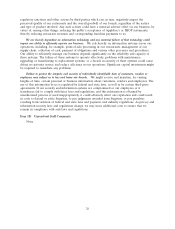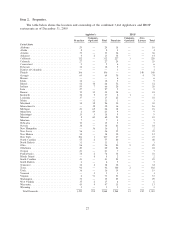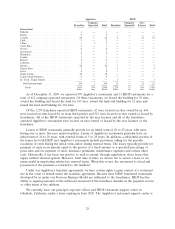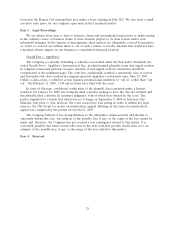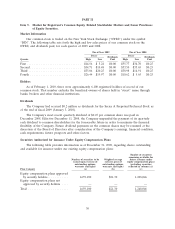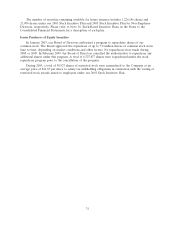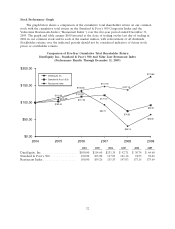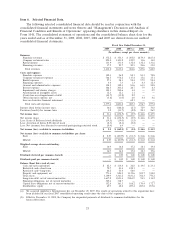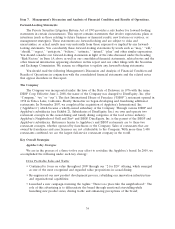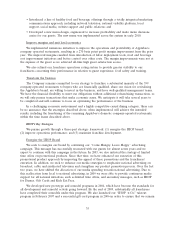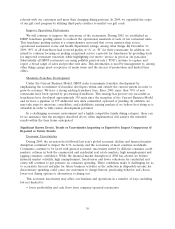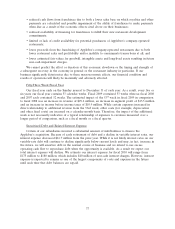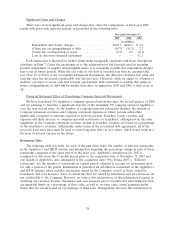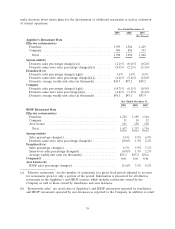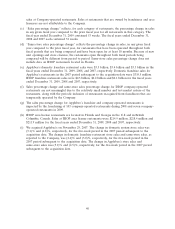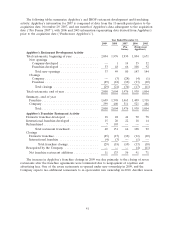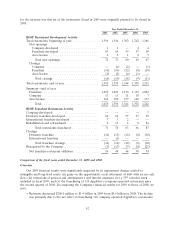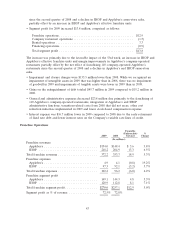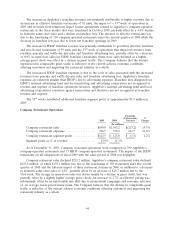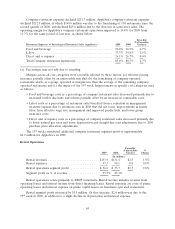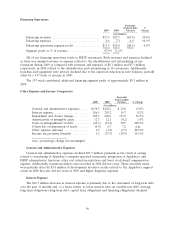IHOP 2009 Annual Report Download - page 55
Download and view the complete annual report
Please find page 55 of the 2009 IHOP annual report below. You can navigate through the pages in the report by either clicking on the pages listed below, or by using the keyword search tool below to find specific information within the annual report.
relevant with our customers and meet their changing dining patterns. In 2009, we expanded the scope
of our gift card program by utilizing third-party retailers to market our gift cards.
Improve Operations Performance
We will continue to improve the operations of the restaurants. During 2003, we established an
IHOP franchisee grading system to evaluate the operational standards of each of our restaurant units.
This franchisee grading system is a comprehensive scorecard that covers mystery shop scores,
operational assessment scores and health department ratings, among other things. By December 31,
2009, 90% of all franchisees had received grades of ‘‘A’’ or ‘‘B’’ for their restaurants. In addition, we
intend to continue focusing on making exceptional service a priority for franchisees by providing tools
for improved restaurant execution, while highlighting our motto ‘‘service as good as our pancakes.’’
Substantially all IHOP restaurants are using pollable point-of-sale (‘‘POS’’) systems to capture and
report a broad range of sales and product mix data. This information is used by management to, among
other things, gauge guest acceptance of menu items and the success of promotions and limited time
offers.
Maximize Franchise Development
Under the Current Business Model, IHOP seeks to maximize franchise development by
emphasizing the recruitment of franchise developers within and outside the current system in order to
grow its revenues. We have a strong existing franchisee base. Since 2003, more than 70% of new
restaurants have been opened by pre-existing franchisees. This strategy has proven very successful as
franchisees have developed approximately 350 units since the inception of the Current Business Model
and we have a pipeline of 357 additional new units committed, optioned or pending. In addition, we
may take steps to intervene, consolidate, and rehabilitate existing markets if we believe that doing so is
advisable in order to fully realize development potential.
In a challenging economic environment and a highly competitive family dining category, there can
be no assurance that the strategies described above, when implemented, will achieve the intended
results within the time frame anticipated.
Significant Known Events, Trends or Uncertainties Impacting or Expected to Impact Comparisons of
Reported or Future Results
Economic Uncertainties
During 2009, the recession that followed last year’s global economic decline and financial market
disruption continued to impact the U.S. economy and the economies of most countries worldwide.
Consumers continue to be faced with general economic uncertainty fueled by difficult consumer credit
markets, softness in both the commercial and residential real estate markets, high unemployment and
lagging consumer confidence. While the financial market disruption of 2008 has abated, we believe
financial market volatility, high unemployment, foreclosures and lower valuations for residential real
estate will continue to put pressure on consumer spending. These conditions make it challenging for us
to accurately forecast and plan for future business activities as the reduction in disposable income for
discretionary spending could cause our customers to change historic purchasing behavior and choose
lower-cost dining options or alternatives to dining out.
This economic uncertainty may affect our business and operations in a number of ways, including
but not limited to:
• lower profitability and cash flows from company-operated restaurants;
36


